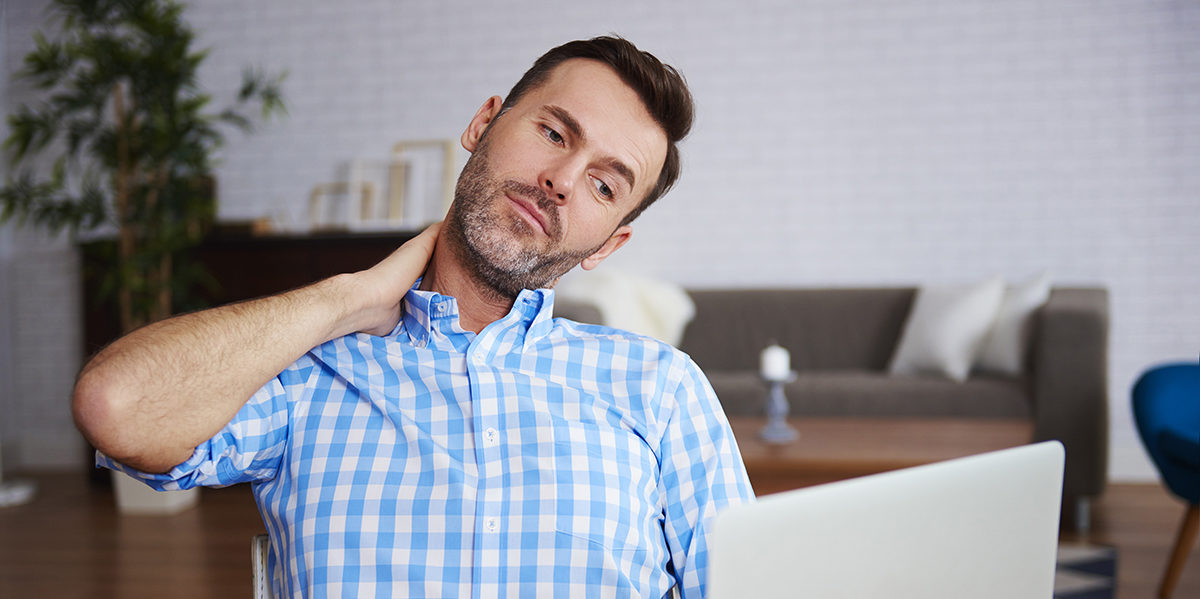Stretching is a key component to staying in shape. Stretch before you work out, after your workout when you get out of bed and again whilst working at a desk. There are numerous reasons why it should become the norm and part of your daily ritual.
Let’s face it, we’ve been home six or seven weeks now due to covid19 and it doesn’t look like we are going to get any release soon. Whilst we have been producing our weekly workout videos covering:
We also are aware that working out videos often do not have stretching exercises in them, unless of course, it’s yoga. In today’s article, our Head Personal Trainer Laszlo gives you his 5 best whilst you work at home.
The benefits of the chest stretch are that you open up the posture from being hunched forward and it stretches the chest muscles. By doing this you can improve the flexibility and range of motion which is important for proper posture.
To start, find a doorway, or a space between two walls that you can hold onto (see video for a visual guide). Raise your hands above shoulder level, hold onto the frame or walls, take a step forward so that you can really feel the stretch in your chest. Hold for around 45 seconds and repeat three times.
The hip flexor stretch stretching the hip flexors to release the tension on the hip which will help to resolve lower back pain. It is extremely important that those in a sedentary or seated position perform daily hip flexor stretches. They are important to counteract the effects of prolonged periods of sitting.
In addition to the benefits of counterbalancing the seated periods, they also help the hip to extend fully and avoid compression in the lower back.
To start, take a step forward with your right foot and drop the lower knee of the rear leg so that both have a 90-degree bend. Ensure that both the knee of your left leg and heel of the front foot is planted. Raise your left arm straight above your head and reach across, applying a stretch up the left side of your body. Hold the stretch for around 45 seconds and then change sides, repeat three times.
The benefits of neck stretching the trap muscles helps to get rid of headaches that are caused by postural tightness in the neck from sitting.
To start the exercise, find a solid base to sit on, like a chair or if you have one, a workout bench. Place your hand on the back of your head, but on the opposite side of the head to your arm. So if you start with the right hand, reach for the left side of the head and vice versa.
Gently pull the head toward the shoulder, hold for 50 seconds and release and change sides. Repeat this three times per side.
The standing hamstring stretch stretches the hamstrings to release the tension on the lower back and help against lower back pain. In addition to this, you lengthen and loosen the muscles which can shorten with prolonged periods of sitting down.
By loosening the lower back muscles you give the body more flexibility, support and decrease nerve compression.
To start, step the right foot forward keeping the leg straight and the heel on the floor, slightly bend the left knee. Then lean forward over the right foot so that you touch your right toe with the right hand. Hold the stretch for 50 seconds, then change sides and repeat four times per leg.
The well-known benefits of child’s pose are that it releases tension in the lower back and stretches the lower back muscles. It also stretches the hips, thighs and ankles whilst at the same time helping to relieve tension, stress and fatigue.
If you add support to head and torso you can also ease back and neck pain.
To start the exercise, find a towel or mat and get onto your hands and knees. Place your hands out in front of you and sink back onto your hips as per the image above. With your hands fully stretched out ahead of you and your head between your shoulders, hold for one minute and return to your starting position. Repeat four times.
Regular stretching will help blood flow and reduce muscle soreness. Different types of stretching can also help with mindfulness. The ability to fully relax and clear your mind of the daily anxieties that often accompany tight muscles. Ensure that you employ a deep breathing technique when stretching and avoid holding the breath at all times.
Whenever you exercise you should always stand with your feet shoulder-width apart, keeping the soles of your feet flat on the ground. If possible, try to stretch in the morning and the evening before bed. Don’t leave it to the days when you train or when you are feeling tense and sore. It’s important to look after your body and this is certainly one of the most important.

